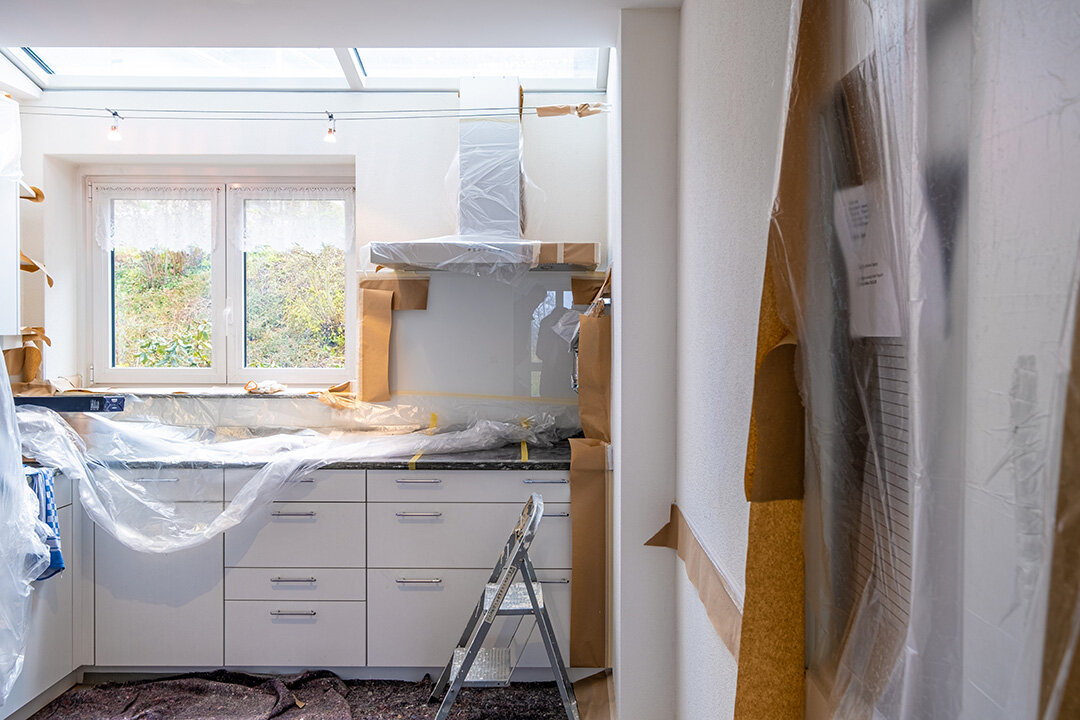In a previous blog post, we talked about how to plan for a renovation. Now we’re going to tackle some common pitfalls when undertaking a renovation or remodel. This applies to projects of all sizes from a large scale total home renovation to smaller projects such as kitchen or bathroom remodels. “What can go wrong?” you might ask. Well, there’s actually quite a number.
Not Allocating Enough Time
We all want to see results as fast as possible, especially in this day and age. However, high-quality work takes time. Unless your house is going to be on an episode of Extreme Makeover, you need to be more realistic with the timeframe. Even with the most careful planning, it would still do you good to add a buffer of a few weeks.
You wouldn’t want to rush picking out the exact finish or appliance you want only to regret it later. You also wouldn’t want to rush your contractor and end up with a leaky sink or a misaligned cabinet. Don’t rush the job.
Underestimating the Costs
Aside from not having enough time, it’s all too common not to have enough money. As we mentioned in our previous article, you need to plan your budget. Renovations normally end up costing more than you initially expect. To the untrained eye, there are a lot of costs that may be overlooked.
There’s also a multitude of issues that can come up such as accidents, electrical issues, water leaks, and many more. You may also consider cutting costs by going for cheaper materials, but you have to be careful with this. Sometimes those cheaper items won’t last you very long and you’ll end up spending more in the long wrong. As they say, “Cheap people pay twice.”
Similar to time, you should set up a buffer for your budget. Around 15 to 20% of the total construction cost is a good place to start. In the event that you don’t end up not needing that extra buffer, you can use the extra funds for some extra decorative pieces for your new space. Having some extra funds just in case is a win-win for you.
Choosing a Too-Trendy Design
While being trendy is not a bad thing in itself, it’s easy to get caught up in all the latest fads. Your new living room or kitchen can end up being too loud and go out of style in a few years. You may regret it down the line. If you go for a more classic and timeless design, you’ll enjoy the space for a longer time. Plus, you won’t have to worry about it going out of style.
If you’re only going to add or remodel a small section of your home, you also have to consider how it works with the rest of the house that’s not being remodeled. Your newly refurbished kitchen doesn’t necessarily have to be in the exact same style as the rest of your home, but it needs to complement it. Otherwise, newly refreshed space might just stick out like a sore thumb.
Going Feature-crazy
In a similar vein to being too trendy, it’s also all too easy to have too long a wish list. You might want to equip your home with the latest in tech –smart appliances, smart TVs, smart lighting, smart everything. You may want the latest and greatest kitchen gear.
Tech has also been advancing at such a fast rate that it gets outdated just about as fast as design trends. Stop and think first of these are things you really need and will use. Too many high-end upgrades can break the bank, so it’s best to be judicious with your choices in features.
Another thing to consider is the possibility of selling your home in the future. If you equip your space with today’s latest and greatest smart home systems, it will probably be outdated when the time comes to sell. The aging technology could actually detract from the resale value. Similar to the design style, going for timeless features will be a safer bet.
Making Too Many Changes
While you’re seeing your beautiful new space come to life, you may see things you want to change. Maybe the color is off or the cabinet looks too big. Maybe you flipped thru an interior design magazine or saw a beautiful home office design on Instagram, and now you’re just dying to add that thing to your own space. But if you keep changing things when work is already underway, you’ll end up with headaches. All these little changes will add up in cost and delay your schedule. This can easily get out of hand. If you choose your appliances ahead of time, you can avoid making changes to the cabinet measurements that go along with it.
If you carefully select your color palette, you can avoid having to repaint. If you carefully plan your project so you can avoid these changes. This goes hand in hand with the first two points we mentioned. The fewer impulse changes you make, the more time and money you save.
Not Hiring a Professional in the First Place
A lot of the above mistakes and many possible more can be avoided or at least kept to a minimum if you work with a professional. Consulting with architects or interior designers can help ensure that you get the most out of your space. You can have the assurance of a functional and beautiful good-quality design.
In addition to a good designer, it’s also better to hire a contractor. There’s certainly the temptation to just DIY it, especially if it’s a smaller project. But it’s hard to match the quality of a pro. They’ll have prior experience working on similar projects and will likely be able to plan for things that are easy to overlook. It can be anything from the costs of permits, ordering extra flooring materials, or choosing the right kind of hardware for your cabinets. The professionals will also have a better understanding of possible costs and how to manage the project schedule, so that’s fewer things for you to worry about.
There’s certainly more that can go wrong with a renovation or remodel than just these six things. But with careful planning, working with a professional, and just keeping this list in mind, you’ll be well on your way to a successful renovation.
Thank you for Visiting Wood and Co











